Compactness is one of football’s most powerful — yet often misunderstood — principles. It is usually framed in defensive terms, but compactness in possession is just as critical. The spacing of players while attacking determines how quickly the ball can circulate, how resilient the team is against pressure, and how prepared it is for defensive transitions.
Traditionally, most teams have aimed for maximum width and depth in attack. The idea is to stretch the opposition, open passing lanes, and isolate players in 1v1 situations. This approach has proven highly effective at the top level. But compact attacking play shows there is another way: instead of stretching the opponent, shorten the distances between your own players.
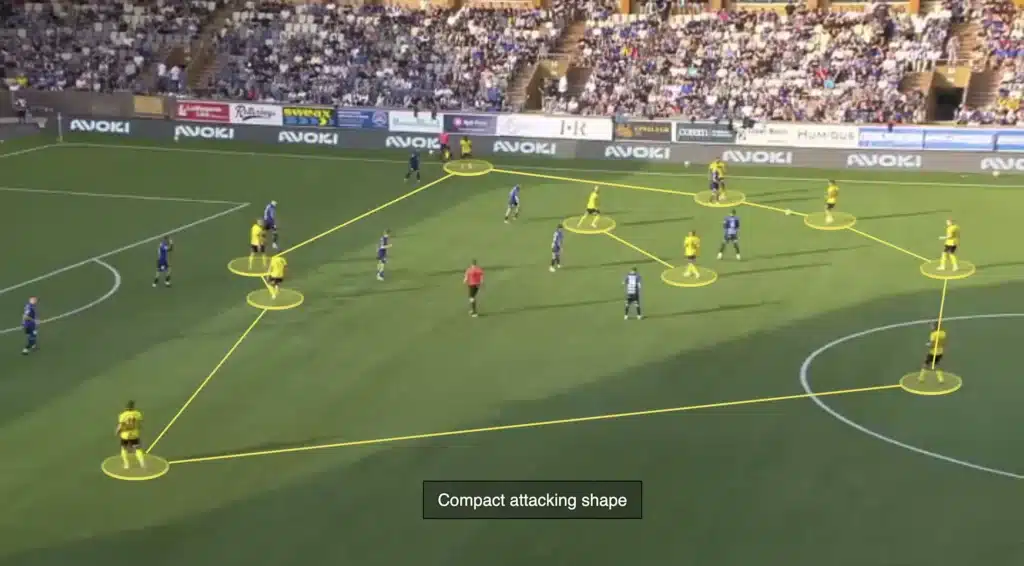
When used deliberately, this unconventional approach can protect possession, speed up progression, and create a natural platform for rest-defence.
Pressing Windows: Why Ball Travel Time Matters
Pressing relies on timing. The best moment for defenders to jump is when the ball is traveling from one player to another. At that moment, it is locked in motion: the passer can’t change its course, and the receiver hasn’t yet taken control.
This is the “window of opportunity” for the press. But the length of that window depends entirely on passing distance:
- Longer distances = longer travel times, giving defenders more time to close down the receiver.
- Shorter distances = the ball arrives almost instantly, shrinking the window for pressure.
Compactness directly shortens these travel times. By keeping teammates close, the ball moves faster between feet. Even if an opponent times their press correctly, the receiver gains control before pressure can arrive.
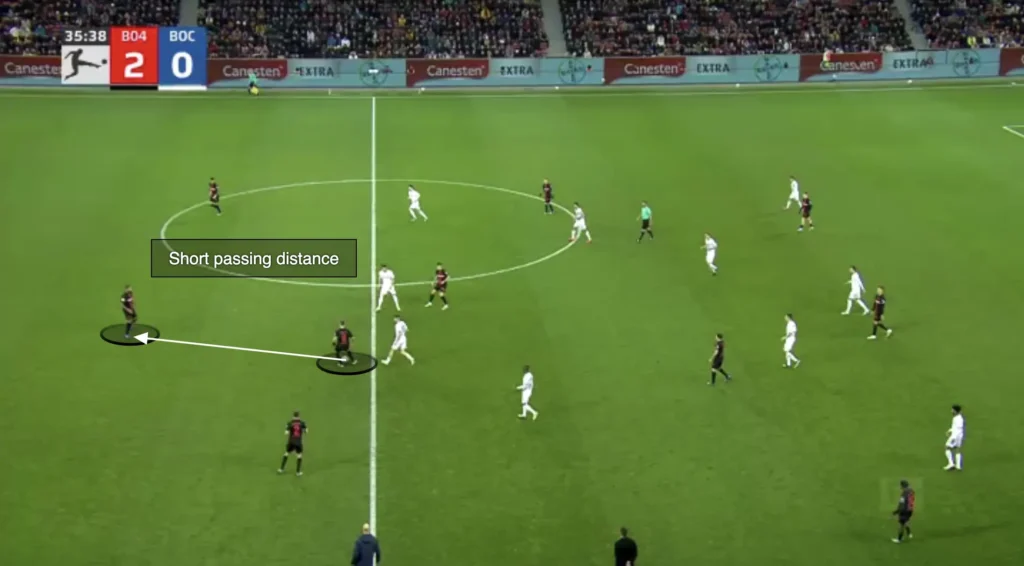
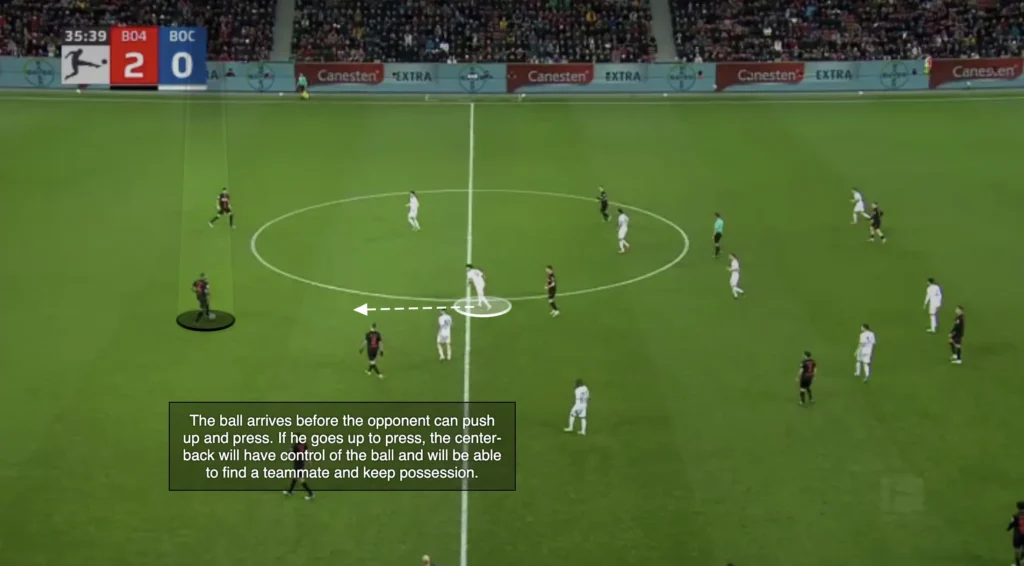
And there’s another benefit: compactness gives receivers more nearby options. If pressed, they can quickly bounce the ball off to a teammate within a few yards. The presser isn’t just racing the ball — they’re racing a network of short, rapid options that constantly shift the angles of play.
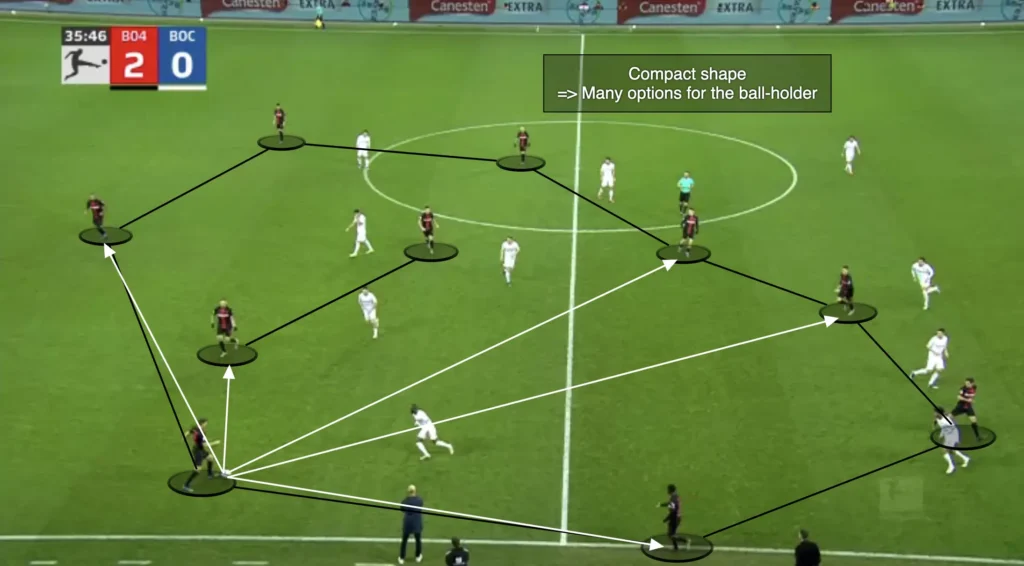
This is very different from the stretched approach, where passes are longer, travel slower, and often leave the receiver isolated.
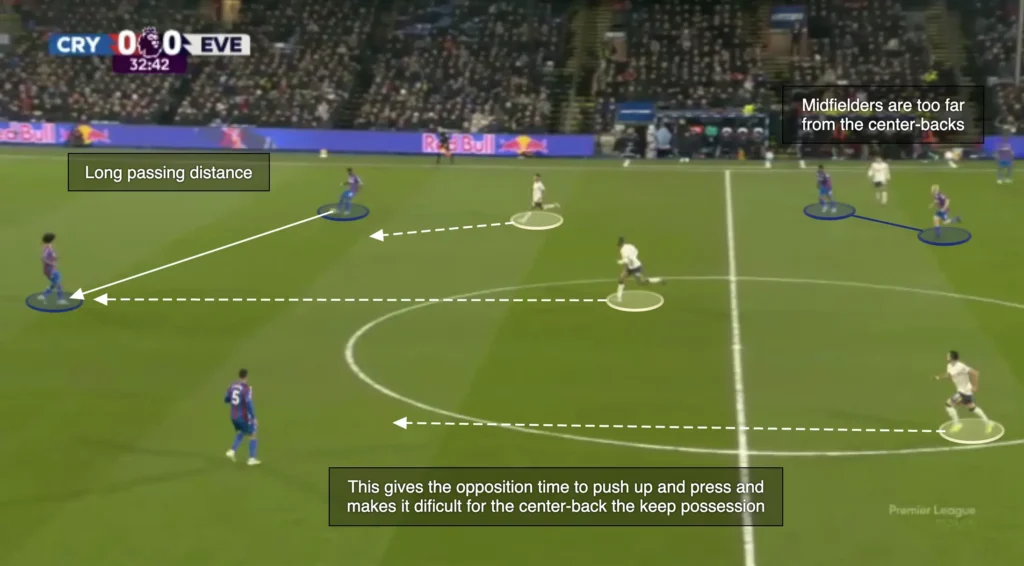
Compactness Enables Quick Combinations
Short distances don’t just protect against pressure — they allow teams to attack more quickly.
When teammates are positioned close together, they can combine in one- or two-touch passing sequences. These “wall passes” and forward lay-offs are almost impossible to defend because the ball moves faster than any player can run.
For example:
- An attacker receives under pressure.
- Because of compact spacing, he can immediately play a short lay-off to a nearby teammate.
- That player, already facing forward, can release a runner into space with a vertical pass.
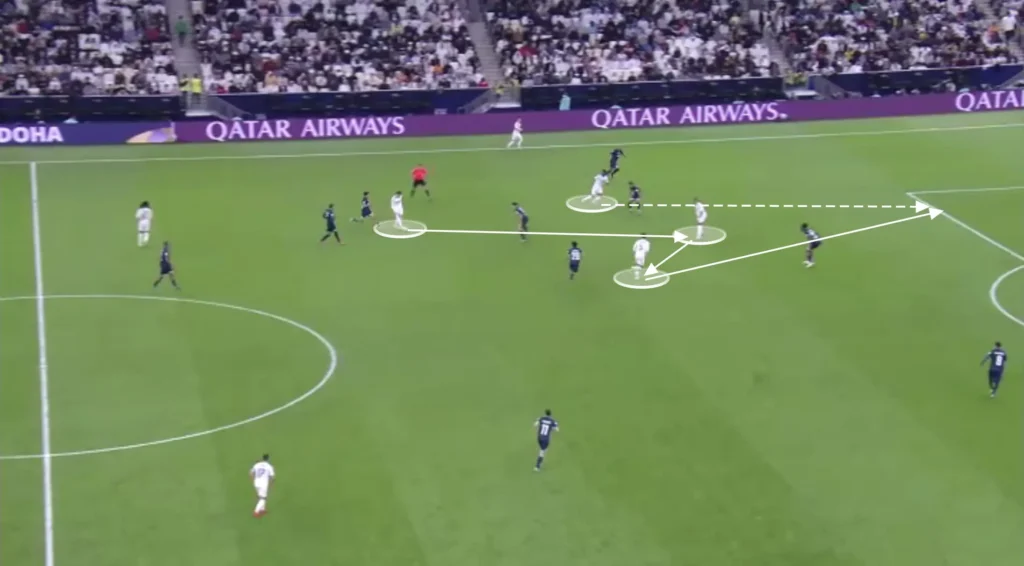
This chain reaction — receive, lay off, play forward — happens in seconds. Defenders who step forward to press find the ball has already bypassed them.
Stretched structures may offer more space and isolation opportunities, but compact structures allow for speed of combination. It’s not about one being “right” and the other “wrong” — it’s about choosing the right tool for the right game.
Rest-Defence: Security While Attacking
Compactness in attack also ensures stability when possession is lost. By keeping many players close to the ball, the team automatically creates a dense structure for counter-pressing.
This is rest-defence: the idea that your attacking shape doubles as your defensive insurance.
- When compact, multiple players are in position to swarm the ball immediately upon losing it.
- When stretched, the ball carrier may lose possession with teammates 20–30 yards away — too far to prevent a counterattack.
Elite teams build their attacking structure with this in mind. They don’t separate “attackers” and “defenders” but instead ensure that their attackers are positioned to defend the moment the ball changes hands.

Compactness makes this possible: it means the distance to pressure the opponent is always small.
How Teams Create Compactness in Possession
Maintaining compactness is not automatic — it is the product of deliberate positional choices. Some common mechanisms include:
- High defensive line: Compresses the team vertically, ensuring that midfielders and forwards are not isolated.
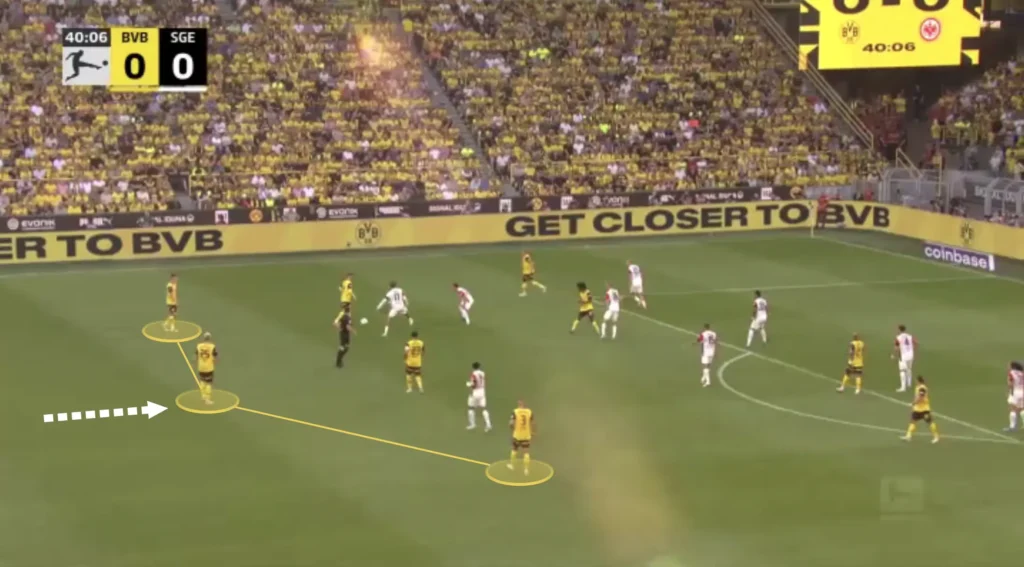
- Far-side winger or fullback tucking in: Instead of holding width, the winger or fullback shifts into the half-space, staying connected to central teammates and shortening distances.
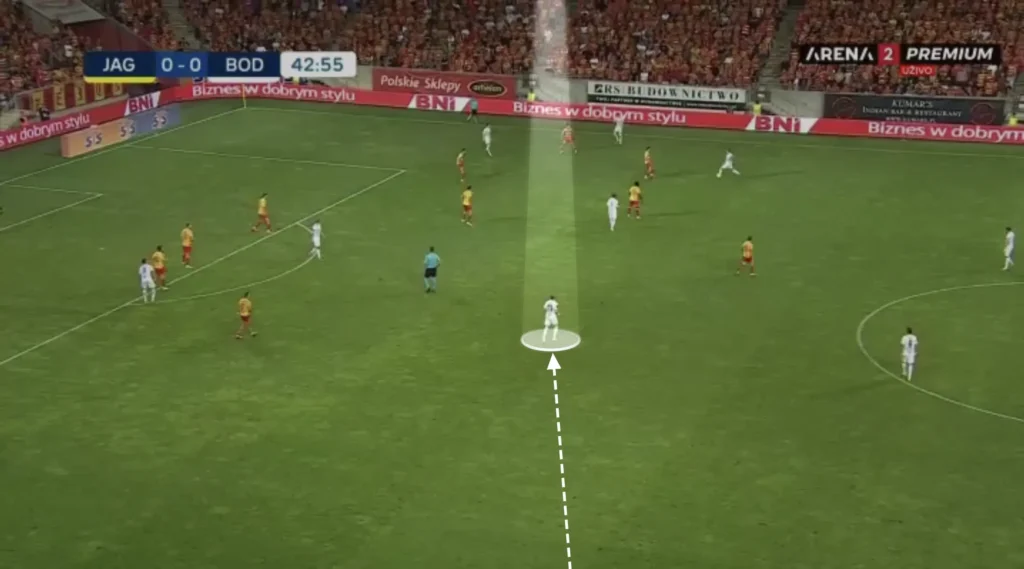
- Ball-oriented shifting: As the ball moves, the entire block shifts with it, maintaining density around the ball rather than leaving large gaps.
Of course, this comes with trade-offs. A compact structure sacrifices natural width, which is why many teams prefer stretching the field to force defenders apart. But the compact approach, when executed well, allows quicker circulation, better pressing resistance, and stronger defensive balance.
Measuring Compactness with Technology
Traditionally, compactness has been something analysts judged by eye, often pausing video to estimate distances and spacing between players. That process can be subjective and time-consuming.
With modern tools like Impact Soccer, compactness can now be quantified. Their system identifies whether a team is compact or stretched, providing hard data to support tactical analysis.
I asked Joshua Konowe, CEO of Impact Soccer, about how this works. He explained:
“We wanted to make these moments around compactness better understood for everyone and remove having to guess when it is happening and to have to bother with editing film to accomplish that. Our next version will display when a team is compact or stretched automatically. This hard data is a new way for clubs, academies, coaches and players to leverage their video data and from any device type.”
By putting numbers to what was once a subjective impression, analysts and coaches can now integrate compactness into their workflows in a much more reliable way.
Conclusion
Compactness in attack is not the conventional method. Most teams stretch the pitch as much as possible, and when applied well, that works brilliantly. But compactness provides a fascinating alternative:
- It shortens ball travel time, reducing the effectiveness of pressing.
- It enables fast combinations that progress play through the tightest defenses
- It doubles as rest-defence, giving immediate security against counters.
Thanks to new tools that measure compactness, analysts and coaches can now explore this principle with clarity. Stretching and compactness aren’t opposites in conflict — they’re two ends of a spectrum. The art lies in knowing when to use each.
